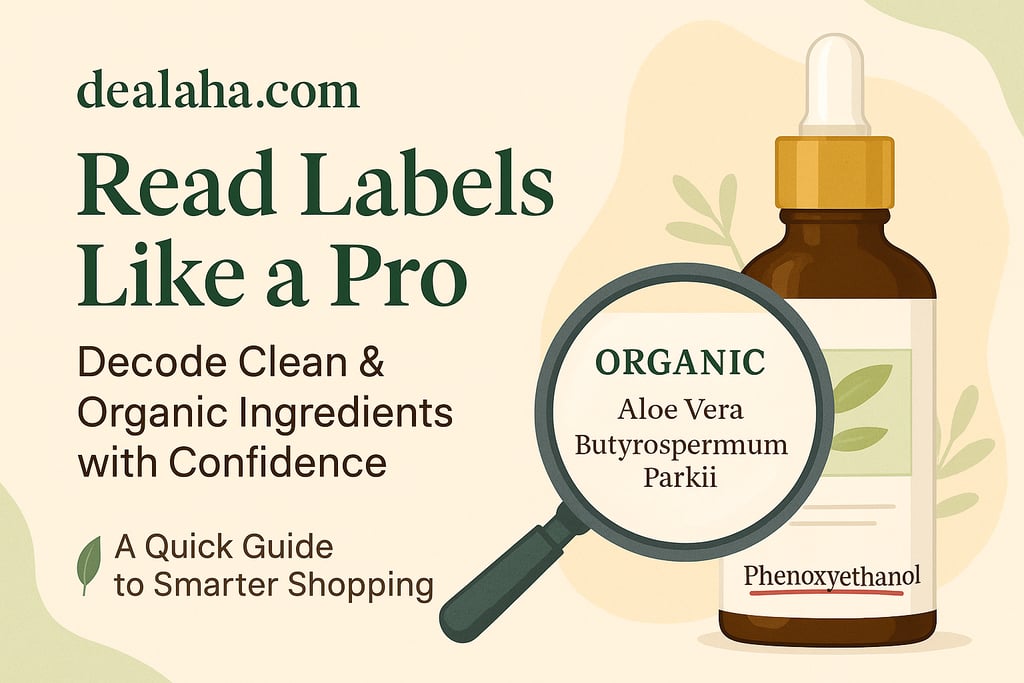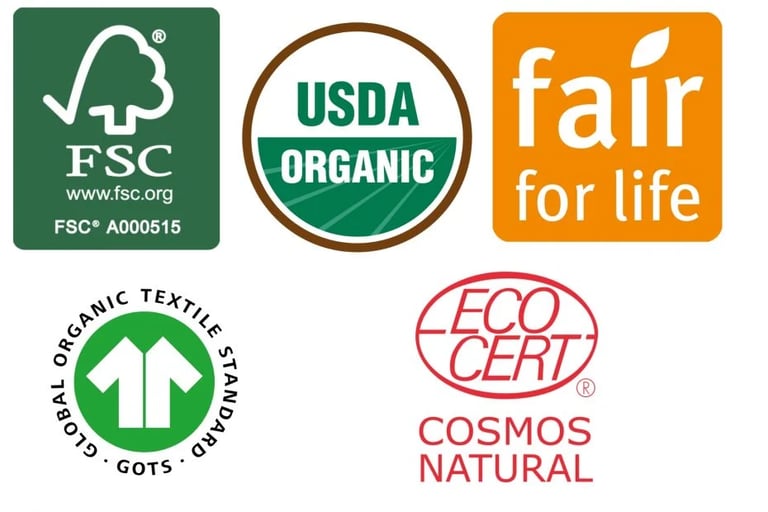How to Read Ingredient Labels Like a Pro (Especially for Organic Products)
Confused by product labels? You're not alone. In the age of "clean beauty" and "green marketing," decoding ingredient labels—especially on organic products—can feel overwhelming. But learning how to read skincare and wellness labels is one of the most empowering steps you can take as a conscious shopper. Let’s break it down together.
WHAT WE RECOMMENDHOT DEALSSKINCARE & CLEAN BEAUTYBODY & HAIR CARE
4/23/20252 min read


Why Reading Ingredient Labels Matters More Than Ever
With the rise of greenwashing—where brands market products as “natural” or “clean” without backing it up—many consumers are unknowingly buying products full of synthetic additives or hidden toxins. Just because a product says “organic” doesn’t mean it meets strict standards. That’s why understanding labels is so important, especially when shopping for skin or haircare you use daily.
Start with the Ingredient Order
Here’s a little-known fact: ingredients are listed in descending order by concentration. That means the first 5 ingredients make up the bulk of the formula.
🔍 Pro Tip: If water (aqua) is first, the product is water-based. If “organic” ingredients are buried at the bottom, the product might only contain trace amounts—not enough to justify the label.
Natural vs. Organic vs. Certified Organic
Not all terms are created equal. Here’s how to tell them apart:
Natural: May contain plant-derived ingredients, but doesn’t guarantee purity or safety.
Organic: Refers to ingredients grown without synthetic pesticides or GMOs—but unless certified, this is just a claim.
Certified Organic: Look for labels like USDA Organic, COSMOS, or ECOCERT. These ensure the product meets verified organic standards.


Toxic Ingredients to Watch Out For
Even in products labeled “organic,” watch for these common red flags:
IngredientWhy to AvoidParabensLinked to hormone disruptionPhthalatesOften hidden under “fragrance”; endocrine disruptorSodium Lauryl Sulfate (SLS/SLES)Harsh cleanser, causes irritationSynthetic FragranceCan include hundreds of undisclosed chemicalsPhenoxyethanolPreservative often used in “clean” products—can irritate skin
Understand INCI (International Nomenclature of Cosmetic Ingredients)
Labels may list ingredients using scientific names like Butyrospermum Parkii instead of “Shea Butter.” This is known as the INCI system, used globally to ensure consistency.
🔎 Use tools like:
INCI Decoder
EWG’s Skin Deep Database
They’ll help you identify and rate ingredients quickly.


Red Flags in “Organic” Product Claims
Sometimes, labels use “organic” in marketing but don’t list certified organic ingredients in the INCI list. Here's how to spot the trickery:
Phrases like “made with organic ingredients” can mean as little as 10% of the formula.
If there's no third-party certification, treat it with skepticism.
Look for symbols like:
✅ USDA Organic
✅ ECOCERT
✅ COSMOS Organic
How to Spot a Truly Clean Product in 30 Seconds
Here’s a fast checklist you can use when browsing:
✅ Short, simple ingredient list
✅ Recognizable botanical names
✅ No vague terms like "fragrance" or "perfume"
✅ Transparent % of organic content (e.g., 95% certified organic)
✅ Trustworthy certifications on the packaging


Final Thoughts: Empower Your Routine
Reading ingredient labels might seem tedious at first, but once you get the hang of it, you’ll never go back. You'll make smarter, safer, and more sustainable choices—for yourself and the planet.
At Dealaha.com, we do the digging for you. Every product we feature has passed our label test so you can shop with confidence.
👉 Looking for skincare that actually matches the label?
Explore our latest organic picks here.
Quality You Can Trust
Discover handpicked, high-quality products that support a healthier, more intentional lifestyle.
Contact
Stay in the Loop
© 2025 Dealaha™ All rights reserved.
